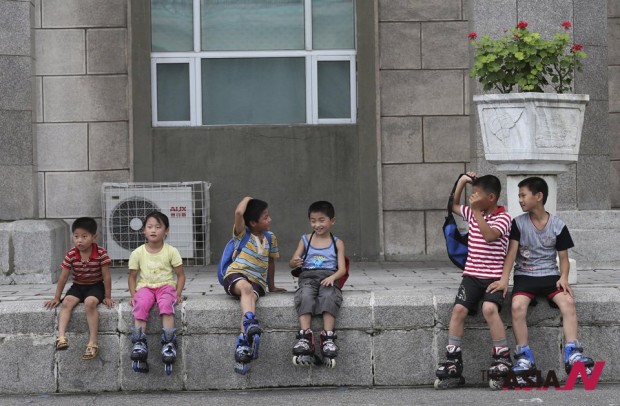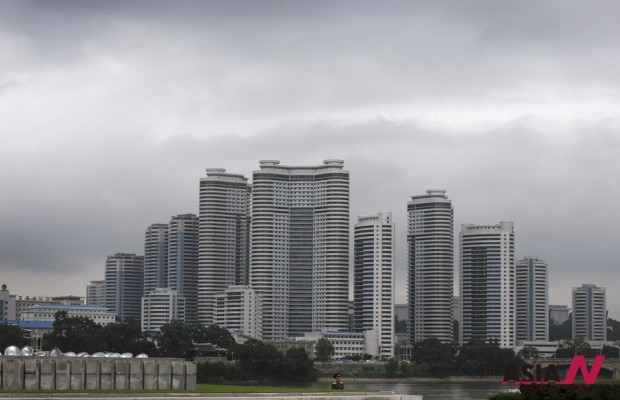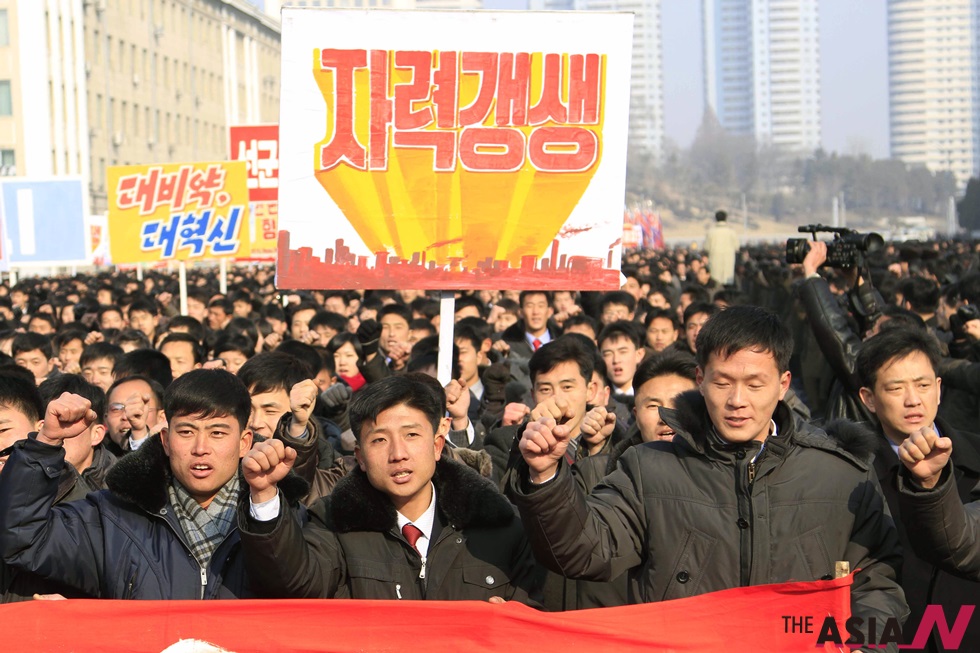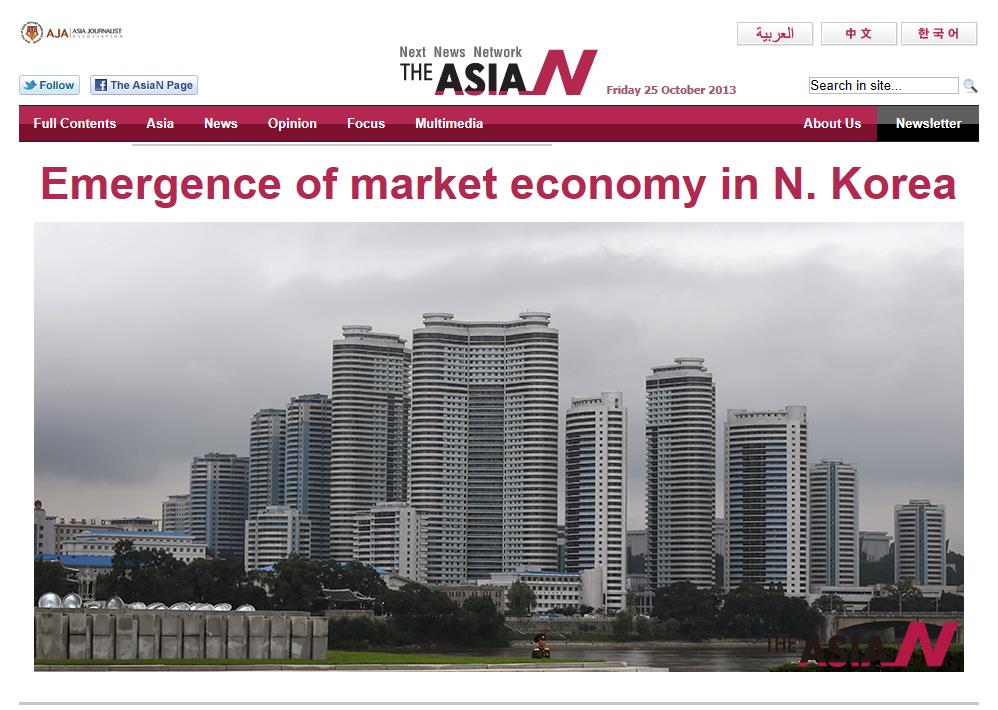Emergence of market economy in North Korea

What can we learn from the dramatic transformation that North Korea has undergone in the last two decades? I am afraid that many of my readers might not like my conclusions, but for me, the last two decades are another confirmation that markets and trade are all too natural for homo sapiens, at least at the current stage of world history.
Indeed, over the last two decades, North Korean society has changed beyond recognition. Once upon a time, it was the perfect embodiment of Joseph Stalin’s vision: a society where the authorities knew, controlled and regulated everything. In North Korea, the Stalinist economic model was taken to extremes that could not be found in either the Soviet Union, or in any other country of East Asia for that matter. Private property and markets were wiped out, and everything came to be rationed and controlled by the state.
These days are long gone. In the late 1980s, North Korea began to collapse economically. A famine ensued; the state could no longer deliver food, and so ration coupons became meaningless pieces of bad-quality paper.
Many North Koreans perished in this cataclysm, but many more survived to create a new society. They did so with little if any support from above, since the North Korean government has wanted to keep the old system as intact as it can. Nonetheless, the old system did not fit the situations that most people found themselves in, and changes below happened all the same.
In a nutshell, these changes from below can be summed up as the ‘rediscovery of capitalism and markets.’ When North Koreans discovered that rations were no longer available, they began to do what people have done for millennia – to make a living by themselves.
To trade is human
People went to the mountains to toil on small private plots. They sold everything they could at fast-growing markets. They ran smuggling operations, moving all kinds of things to and from China. They even managed to start making their own goods in tiny home workshops. Suddenly money, hitherto all but useless in the distribution economy, became very important while interest in the state declined dramatically.
The North Korean government stopped publishing economic statistics half a century ago, and therefore all estimates are rather rough. Nevertheless, Professor Kim Byung Yeon recently estimated that some 80% of North Korean families’ actual income comes from market-related activities. This means that the old state-run economy has basically become marginal for most North Koreans.
The initially primitive markets soon became more sophisticated. Anything but the simplest of business needs credit, but state banks do not provide credit to entrepreneurs because the North Korean law says that such people do not exist. As a result, money-lending enterprises began to appear, providing merchants with necessary, though quite expensive, credit.
Private enterprises began to get involved in infrastructure too. A countrywide market cannot exist without transportation. In the sluggish and inefficient state transportation system, which relies heavily on archaic technology, moving goods around is difficult. Therefore, some entrepreneurs have started importing second-hand trucks from China and now use these vehicles to move goods around the country. Private accommodation and eateries began to appear as well.

We should not be naive and over-optimistic, though: the rebirth of capitalism brought with it the revival of many social ills that had been largely eradicated in Kim Il Sung’s North Korea.
Prostitution has reappeared, and the crime rate has also increased – both being partially driven by the growing gap between the haves and have-nots. The most dangerous of these social ills is of course corruption, which has become rampant since the collapse of the state economy.
Under the Kim Il Sung regime, bribery and graft were rare. After all, back then it made little sense for officials to solicit for bribes in a largely non-monetized economy. Connections mattered, but money did not. Material prosperity largely came from one’s career, and so bureaucrats did not look for bribes: they followed orders, no matter how absurd.
Things have changed a lot in the last two decades. Nowadays, a person with money can buy pretty much anything – from a good apartment to a Japanese refrigerator, not to mention a reliable supply of electricity. Money has become very important, and understandably graft has become one of the booming industries in North Korea.
It is remarkable that in many cases, state enterprises have learnt from private entrepreneurs. State-appointed managers often now behave as if they were the actual owners of their factories: they invest money, sell their factory’s product, and pocket a significant part of the resulting profits. Sometimes they enter into partnerships with private investors and/or entrepreneurs. In the latter case, the line between state and private businesses has become very thin.
Social ills tag along
Another result of all this is the growing gap between the rich and the poor. Nobody, including the Supreme Leader Kim Jong Un himself, can measure the Gini coefficient of North Korea.
However, the guestimates of the few experts who specialize in the North Korean economy is clear: 0.5 or above – a very high level, indeed. This does not necessarily mean that the poor are getting poorer, however: in fact from what is known about North Korea, it seems that living standards of the poorest are also improving.
At any rate, North Korea of today has taught us a lesson: to trade is human. The market economy does not naturally produce a paradise, but it is nonetheless natural and better than any alternative (for the time being at any rate).
However, all this begs one question: why did North Korea’s marketization from below fail to produce the economic growth that one can see in China and Vietnam? Contrary to what many believe, the economic situation in North Korea is steadily improving, but growth is very slow, and the country is increasingly lagging behind its neighbors.
One of the reasons seems to be government policy. In China and Vietnam, the government has taken the lead and has done what it can to provide the growing market economy with a favorable environment. China and Vietnam legalized most private economic activities, and therefore businesses could operate in a much less restrictive environment, and bribing officials was not such a deadweight load on the businesses – this is not to say that these two fast developing countries are corruption free. The government also provided some essential services and a modicum of property rights: both completely absent in North Korea.
In North Korea, the government did not help or guarantee the essentials of the market economy, but merely accepted what it absolutely had to. Old regulations remain in place, and the new economy is seen with disgust, so occasional attempts to stage an anti-market crackdown are common. A life-long observer of the North recently told me, “The Pyongyang middle class is doing quite well now, but technically every single member of this group can be arrested and shot according to the letter of the North Korean law. All their activities are completely illegal.”
Therefore, North Korea’s marketization was sufficient to end the famine and provide most North Koreans with the bare essentials of life, but without government support and protection, it is not enough to ensure that this country will develop.






